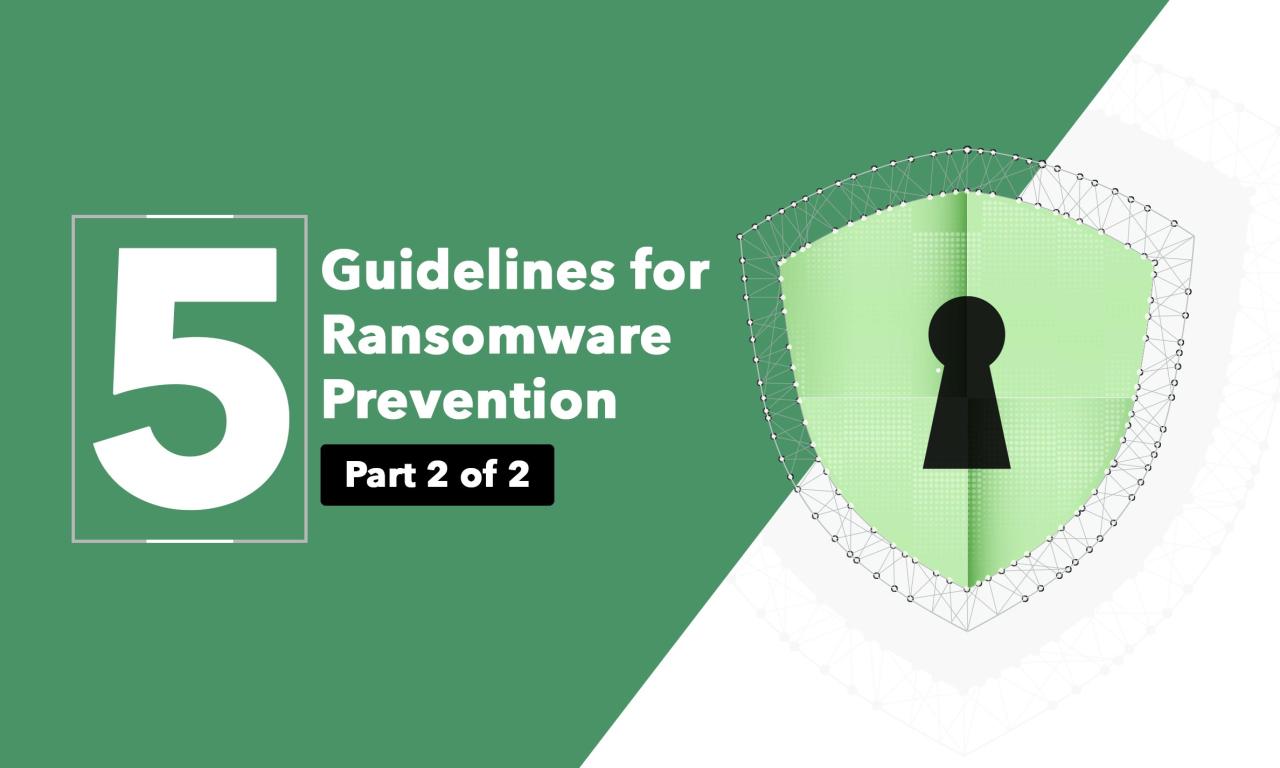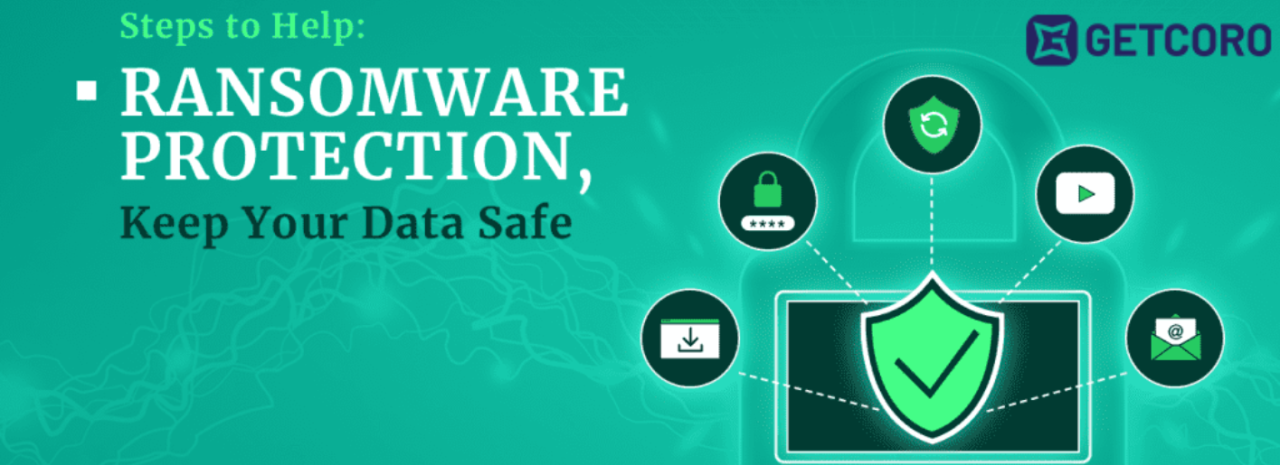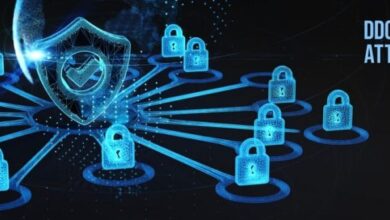
Ransomware Hype and Prevention Strategies 2
Ransomware Hype and Prevention Strategies 2: We’re all bombarded with headlines about ransomware attacks – but how much of it is real panic, and how much is genuine threat? This post dives deep into the current state of ransomware, separating the hype from the hard facts. We’ll explore the evolution of these attacks, the most common types, and where they’re hitting hardest.
More importantly, we’ll equip you with practical, actionable strategies to protect yourself and your business, covering both technical solutions and crucial human factors.
From understanding the latest tactics used by cybercriminals to implementing multi-layered security and crafting a robust employee training program, we’ll cover it all. We’ll also look at the role of legislation and regulation in the fight against ransomware, and what the future might hold in this ever-evolving landscape. Get ready to arm yourself with knowledge and strategies to stay ahead of the curve!
The Current State of Ransomware Threats
The landscape of ransomware attacks has undergone a dramatic transformation in the past five years, evolving from relatively simple encryption schemes to sophisticated, multi-stage operations targeting critical infrastructure and sensitive data. This evolution reflects both the increasing sophistication of cybercriminal groups and the expanding value of data in today’s digital world. Understanding these shifts is crucial for effective prevention and mitigation strategies.
Ransomware Tactics, Techniques, and Procedures (TTPs) Evolution
Over the past five years, ransomware actors have significantly refined their TTPs. Initial attacks often relied on phishing emails containing malicious attachments or links. However, we’ve seen a marked increase in the use of more advanced techniques, including exploiting software vulnerabilities (like those in legacy systems or unpatched applications), leveraging initial access brokers to gain entry into networks, and employing double extortion tactics.
Double extortion involves not only encrypting data but also stealing it and threatening to publicly release it if the ransom isn’t paid. This significantly increases the pressure on victims, even if they have backups. Furthermore, the use of ransomware-as-a-service (RaaS) platforms has lowered the barrier to entry for cybercriminals, leading to a proliferation of attacks. The shift from single-target attacks to larger-scale, indiscriminate campaigns targeting multiple organizations simultaneously is another notable trend.
Prevalent Ransomware Families
Several ransomware families have dominated the threat landscape in recent years. Their unique characteristics and capabilities highlight the diverse strategies employed by attackers. Understanding these differences is crucial for tailoring security defenses.
| Ransomware Family | Target Sector | Typical Ransom Demand | Known Exploit Methods |
|---|---|---|---|
| LockBit | Various, including healthcare, manufacturing, and finance | Varies widely, often in Bitcoin, reaching millions of dollars | Exploiting vulnerabilities, phishing, initial access brokers |
| REvil (Sodinokibi) | Various, with a focus on larger enterprises | High, often in Bitcoin, based on the size and value of the victim’s data | Exploiting vulnerabilities, phishing, compromised credentials |
| Conti | Various, particularly targeting healthcare and government | High, often in Bitcoin, with additional threats of data leaks | Exploiting vulnerabilities, phishing, compromised credentials |
| Ryuk | Primarily targeting enterprises, particularly in the healthcare sector | High, often in Bitcoin, with significant data exfiltration | Often delivered via TrickBot or other malware |
Geographical Distribution of Ransomware Attacks
The geographical distribution of ransomware attacks isn’t uniform. North America and Europe have historically been heavily targeted, largely due to the concentration of large enterprises and critical infrastructure in these regions. However, we’ve seen a rise in attacks against organizations in Asia and other parts of the world, reflecting the increasing globalization of cybercrime. The reasons for this disparity are multifaceted, including differences in cybersecurity maturity levels, regulatory frameworks, and the economic incentives for attackers.
Countries with less robust cybersecurity infrastructure and weaker law enforcement responses may be more attractive targets. For example, the high concentration of manufacturing and industrial control systems in some regions might make them prime targets for ransomware attacks with potentially devastating consequences.
Okay, so we’ve been talking about ransomware hype and prevention strategies 2 – it’s seriously stressful stuff! But thinking about robust systems, it got me wondering about application development. Building secure apps is key, and that’s where learning about domino app dev, the low-code and pro-code future , becomes incredibly relevant. Understanding these development approaches can help build more resilient systems less vulnerable to ransomware attacks, bringing us back to our original discussion on ransomware hype and prevention strategies 2.
Dissecting the “Hype”
The media often portrays ransomware attacks as overwhelmingly frequent and devastating, painting a picture of widespread chaos and crippling losses. While ransomware is a serious threat, the reality is often more nuanced than the headlines suggest. A careful comparison of media portrayals with actual attack statistics reveals a significant gap between perception and reality, a gap that can have serious consequences for both individual users and organizations.Media coverage tends to focus on high-profile attacks, those that involve large organizations or significant data breaches.
These incidents, while impactful, don’t necessarily reflect the overall landscape of ransomware attacks. Sensationalized reporting, driven by the need for compelling narratives, can lead to an overestimation of the frequency and severity of attacks for the average user or smaller business. This can, in turn, create unnecessary fear and potentially hinder effective cybersecurity practices.
Sensationalized Reporting and its Impact
Sensationalized reporting often exaggerates the impact of ransomware attacks, focusing on the monetary losses without providing context. For example, a news report might highlight the millions of dollars a company paid in ransom, without mentioning the company’s overall revenue or the percentage of its data actually compromised. This lack of context creates a distorted image of the typical ransomware attack.
Furthermore, focusing solely on large-scale incidents can lead smaller businesses to underestimate their own vulnerability. They might assume that ransomware only targets large corporations with substantial resources, overlooking the fact that smaller organizations are also frequent targets. This misplaced sense of security can leave them unprepared when an attack does occur.
Examples of Misleading Information, Ransomware hype and prevention strategies 2
Misinformation about ransomware is rampant online. One common misconception is that paying the ransom guarantees data recovery. While some victims do recover their data after paying, there’s no guarantee. Ransomware operators are not always trustworthy, and even if they release the decryption key, it might not work properly. Another misleading claim is that only outdated software is vulnerable to ransomware.
While outdated software is indeed more susceptible, modern systems are not immune. Sophisticated ransomware can exploit zero-day vulnerabilities or leverage social engineering techniques to bypass security measures, regardless of the software’s version. This misinformation can lead individuals and organizations to falsely believe that simply updating software is enough to prevent ransomware attacks, leading to inadequate cybersecurity practices.
Media vs. Reality: A Statistical Comparison
While precise figures on ransomware attacks are difficult to obtain due to underreporting, reputable cybersecurity firms like IBM, CrowdStrike, and Sophos regularly publish reports analyzing ransomware trends. These reports often show that while ransomware attacks are increasing in frequency, the percentage of successful attacks resulting in significant data loss or operational disruption is often lower than media portrayals suggest.
The media’s focus on the most impactful incidents creates a skewed perception of the average ransomware attack. A direct comparison of reported incidents in the media versus the statistics from these security firms often reveals a disparity, highlighting the gap between hype and reality.
Effective Prevention Strategies
Ransomware attacks are becoming increasingly sophisticated, demanding a multi-pronged approach to prevention. Simply relying on a single security measure is insufficient; a robust defense requires a layered security architecture that addresses vulnerabilities at multiple points. This approach minimizes the impact of a successful breach and significantly reduces the likelihood of a successful ransomware infection. The following sections detail technical measures crucial for building such a resilient system.
Multi-Layered Security Architecture
A multi-layered security approach integrates various technologies to protect against ransomware at different stages of an attack. Each layer acts as a defense, making it progressively more difficult for attackers to penetrate the system. The effectiveness of this approach depends on the proper implementation and maintenance of each layer. The table below Artikels key layers, specific technologies, implementation details, and potential weaknesses.
| Security Layer | Specific Technology/Method | Implementation Details | Potential Weaknesses |
|---|---|---|---|
| Endpoint Protection | Antivirus/Anti-malware software, Endpoint Detection and Response (EDR) | Install and regularly update software on all endpoints. Configure EDR for real-time monitoring and threat hunting. | Zero-day exploits, sophisticated malware capable of evading detection, reliance on signature-based detection. |
| Network Security | Firewall, Intrusion Detection/Prevention System (IDS/IPS), Virtual Private Network (VPN) | Configure firewalls to block unauthorized access. Deploy IDS/IPS to monitor network traffic for malicious activity. Use VPNs for secure remote access. | Firewall misconfiguration, evasion techniques bypassing IDS/IPS, VPN vulnerabilities. |
| Data Backup and Recovery | Regular backups to offline storage, 3-2-1 backup rule (3 copies, 2 different media, 1 offsite), immutable backups | Implement a robust backup strategy with regular testing and recovery drills. Ensure backups are stored securely and are inaccessible to attackers. | Backup failures, inadequate testing, insufficient offsite storage, ransomware encrypting backups. |
| Access Control | Principle of least privilege, multi-factor authentication (MFA), strong password policies | Grant users only the necessary access rights. Implement MFA for all critical systems. Enforce strong, unique passwords. | User error, weak passwords, MFA bypass techniques, compromised credentials. |
Advanced Threat Protection Techniques
Beyond basic security measures, implementing advanced threat protection significantly enhances ransomware resilience. These techniques focus on proactively identifying and neutralizing threats before they can cause damage.Intrusion Detection/Prevention Systems (IDS/IPS) monitor network traffic for suspicious activity, alerting administrators to potential threats or automatically blocking malicious connections. Sandboxing isolates suspicious files or programs in a controlled environment to analyze their behavior without risking infection of the main system.
Behavior analysis monitors system activity for anomalies indicative of malicious behavior, such as unusual file access patterns or process creation. Effective implementation requires careful configuration and regular tuning to minimize false positives and ensure accurate detection.
Regular Security Audits and Penetration Testing
Regular security audits and penetration testing are critical for identifying vulnerabilities before attackers can exploit them. Security audits involve systematic evaluations of security controls, policies, and procedures. Penetration testing simulates real-world attacks to identify weaknesses in the security infrastructure. These assessments provide valuable insights into potential vulnerabilities, allowing organizations to proactively address them and strengthen their defenses against ransomware attacks.
The frequency of these activities should be based on risk assessment and industry best practices. For example, critical infrastructure organizations might require more frequent assessments than smaller businesses.
Effective Prevention Strategies

The most sophisticated ransomware protection in the world is useless if your employees fall victim to a phishing scam or accidentally click a malicious link. Human error remains the weakest link in any cybersecurity chain, making robust employee training and security awareness a critical component of any effective ransomware prevention strategy. This section focuses on the human element and how to mitigate the risks associated with it.
Employee Cybersecurity Awareness Training
A comprehensive cybersecurity awareness training program is crucial for reducing the likelihood of ransomware infections. This program shouldn’t be a one-time event; rather, it should be an ongoing process incorporating regular updates and refresher courses. Key topics should include identifying phishing emails (looking for suspicious senders, unusual links, grammatical errors, urgent requests for action), recognizing malicious attachments and links, understanding social engineering tactics, and practicing safe browsing habits.
Practical exercises, such as simulated phishing campaigns and interactive modules, are vital to solidify learning and reinforce good security practices. For example, employees could participate in a realistic phishing simulation where they receive a fake email; successful identification of the phishing attempt is rewarded, while clicking the malicious link leads to a simulated infection scenario with immediate feedback on what went wrong.
This hands-on approach significantly increases knowledge retention and improves employee response to real-world threats.
Strong Password Management and Multi-Factor Authentication
Strong passwords and multi-factor authentication (MFA) are fundamental to a robust cybersecurity posture. Weak passwords are easily cracked, providing attackers with an easy entry point. Therefore, enforcing a strong password policy, including minimum length requirements, character diversity, and regular password changes, is essential. Beyond strong passwords, MFA adds an extra layer of security by requiring multiple forms of authentication, such as a password and a verification code from a mobile app or email.
Implementing MFA across an organization involves several steps:
- Selecting an MFA provider: Choose a reputable provider that integrates seamlessly with your existing systems (e.g., Google Authenticator, Microsoft Authenticator, Okta).
- Deploying the chosen MFA solution: This involves configuring the chosen MFA system and integrating it with your network infrastructure and applications.
- Enrolling users: Provide clear instructions and support to all employees during the enrollment process, ensuring they understand how to use the MFA system.
- Testing and monitoring: Regularly test the MFA system’s functionality and monitor its effectiveness to ensure it’s working as intended.
- Ongoing training and support: Provide ongoing training and support to employees to address any issues and ensure they are proficient in using the MFA system.
For example, a company could start by implementing MFA for all employees accessing sensitive systems or customer data. This would significantly reduce the risk of unauthorized access even if an attacker obtained an employee’s password.
Incident Response Planning and Tabletop Exercises
Having a well-defined incident response plan is critical for minimizing the impact of a ransomware attack. This plan should Artikel clear steps to be taken in the event of an attack, including steps for containing the breach, recovering data, notifying relevant authorities, and communicating with stakeholders. Regular tabletop exercises, which simulate ransomware attacks, are invaluable in testing the plan’s effectiveness and identifying potential weaknesses.
These exercises should involve key personnel from different departments, allowing them to practice their roles and responsibilities in a safe environment. For example, a tabletop exercise could simulate a scenario where a critical server is encrypted by ransomware. Participants would practice identifying the affected systems, isolating them from the network, initiating data recovery procedures, and communicating with external parties, such as law enforcement and cybersecurity incident response teams.
These exercises provide valuable insights and allow for adjustments to the incident response plan to ensure its effectiveness in a real-world scenario. A well-rehearsed plan dramatically reduces response time and minimizes potential damage.
The Role of Legislation and Regulation: Ransomware Hype And Prevention Strategies 2

The landscape of ransomware attacks is constantly evolving, making the role of legislation and regulation crucial in mitigating these threats. Existing laws and regulations attempt to address various aspects of ransomware attacks, from data breach notification to the prosecution of cybercriminals. However, the effectiveness of these measures varies significantly, highlighting the need for continuous adaptation and improvement. This section examines current legal frameworks and explores best practices for organizations to ensure compliance and minimize legal risk.The effectiveness of current legislation in deterring ransomware attacks and protecting victims is a complex issue.
While laws like the GDPR in Europe and the CCPA in California mandate data breach notification and impose penalties for non-compliance, they don’t directly address the criminal activity of ransomware actors. Furthermore, the enforcement of these laws can be challenging, particularly when dealing with cross-border cybercrime. The challenge lies in the fact that many ransomware operations originate from countries with weak or nonexistent cybersecurity laws, making prosecution difficult.
While these regulations help victims understand their rights and potentially recover some losses, they often fail to prevent the attacks in the first place.
Data Breach Notification Laws
Data breach notification laws, such as the GDPR and the CCPA, require organizations to notify individuals and authorities of data breaches. These laws vary in their specifics, including the timeframe for notification and the information that must be disclosed. While these laws don’t prevent ransomware attacks, they aim to mitigate the damage by ensuring timely disclosure, allowing individuals to take protective measures and potentially reducing reputational damage for the affected organization.
For example, the GDPR’s 72-hour notification window puts pressure on organizations to act swiftly and transparently. Non-compliance can lead to significant fines, incentivizing organizations to invest in robust security measures.
Cybersecurity Frameworks and Standards
Numerous cybersecurity frameworks and standards, such as NIST Cybersecurity Framework and ISO 27001, provide guidance on building robust cybersecurity programs. While not legally mandated in all cases, adherence to these frameworks can significantly reduce the risk of ransomware attacks and demonstrate due diligence in the event of a breach. These frameworks offer best practices for risk management, incident response, and data protection, helping organizations build a proactive defense against ransomware.
Following these standards can be a strong defense against legal liability in the event of a breach, as it shows that the organization took reasonable steps to protect data.
International Cooperation in Cybercrime
Effective response to ransomware requires international cooperation. Because many ransomware attacks are cross-border, successful prosecution relies on collaboration between law enforcement agencies in different countries. International treaties and agreements aim to facilitate this cooperation, but challenges remain due to differing legal systems and enforcement capabilities. Examples of successful international cooperation are few and far between, often hindered by jurisdictional complexities and differing legal standards.
Increased cooperation, information sharing, and standardized legal frameworks are crucial for more effective prosecution of ransomware criminals.
Future Trends and Emerging Threats
The landscape of ransomware is constantly evolving, driven by technological advancements and the ingenuity (or, perhaps more accurately, the malicious creativity) of cybercriminals. Understanding the future trends in ransomware is crucial for effective prevention and mitigation. Failure to anticipate these changes leaves organizations vulnerable to increasingly sophisticated and devastating attacks.The convergence of artificial intelligence and the increasing sophistication of ransomware tactics presents a significant challenge for cybersecurity professionals.
This section explores the emerging threats and the potential impact of these technologies on both the attack and defense sides of the equation.
The Impact of AI and Machine Learning
AI and ML are rapidly transforming the cybersecurity landscape, impacting both attackers and defenders. On the offensive side, AI can automate the creation of more effective malware, personalize phishing attacks for higher success rates, and rapidly identify vulnerabilities in systems. Imagine AI-powered malware that dynamically adapts its encryption techniques to evade detection, or phishing emails that perfectly mimic the writing style of a specific individual’s communication.
Conversely, on the defensive side, AI and ML can automate threat detection, predict attacks, and even proactively patch vulnerabilities before they can be exploited. Sophisticated AI-powered security systems can analyze vast amounts of data to identify patterns indicative of malicious activity, enabling faster response times and more effective threat neutralization. The arms race between AI-powered offense and defense is already underway.
Emerging Ransomware Trends: Double Extortion and RaaS
Two significant trends are shaping the ransomware threat: the rise of double extortion and the proliferation of Ransomware-as-a-Service (RaaS) models. Double extortion involves not only encrypting victim data but also stealing it and threatening to publicly release it if a ransom isn’t paid. This significantly increases the pressure on victims, as the reputational damage from a data leak can be far more devastating than data loss alone.
The recent attack on the Costa Rican government serves as a prime example of this tactic, showcasing the devastating impact of double extortion. RaaS, on the other hand, lowers the barrier to entry for cybercriminals. It allows individuals with limited technical expertise to launch ransomware attacks by renting access to the malware and infrastructure from experienced operators.
This democratization of ransomware significantly increases the volume and frequency of attacks, making it harder to track and mitigate. The ease of access to RaaS platforms further exacerbates the already significant threat.
Future Challenges and Proactive Mitigation
Predicting the future of ransomware is inherently challenging, but several key challenges are already emerging. These include the increasing sophistication of attacks, the growing use of AI and ML by attackers, the expanding use of double extortion, and the persistent threat of RaaS. The lack of global cooperation in combating ransomware also poses a significant challenge. Effective mitigation requires a multi-pronged approach.
This includes strengthening network security through robust firewalls, intrusion detection systems, and endpoint protection; implementing regular data backups and disaster recovery plans; educating employees about phishing and social engineering attacks; and fostering a culture of cybersecurity awareness throughout the organization. Furthermore, proactive threat intelligence gathering and the adoption of advanced security technologies like AI-powered threat detection systems are becoming increasingly crucial.
Collaboration with other organizations and sharing threat information are also essential components of a comprehensive mitigation strategy. The collective effort to counter the ransomware threat requires continuous adaptation and innovation.
Final Thoughts

So, while the media often amplifies the fear surrounding ransomware, understanding the realities and implementing the right prevention strategies is key. Remember, a multi-pronged approach – encompassing strong technical security, well-trained employees, and a proactive incident response plan – is your best defense. By staying informed and taking decisive action, you can significantly reduce your risk and protect your valuable data.
Don’t let the hype paralyze you; empower yourself with knowledge and build a resilient security posture.
FAQs
What is double extortion ransomware?
Double extortion ransomware involves criminals stealing your data
-before* encrypting it. They then threaten to release the stolen data publicly if you don’t pay the ransom, adding another layer of pressure.
How can I tell if a ransomware email is a scam?
Look for poor grammar, suspicious attachments, urgent demands, and requests for payment via untraceable methods. Never click links or open attachments from unknown senders.
What’s the role of insurance in ransomware recovery?
Cybersecurity insurance can help cover the costs of recovery, including ransom payments (though this is controversial), legal fees, and data restoration. However, policies vary greatly, so read the fine print carefully.
What is Ransomware-as-a-Service (RaaS)?
RaaS is a business model where cybercriminals rent out their ransomware tools and expertise to others, lowering the barrier to entry for less technically skilled attackers.





